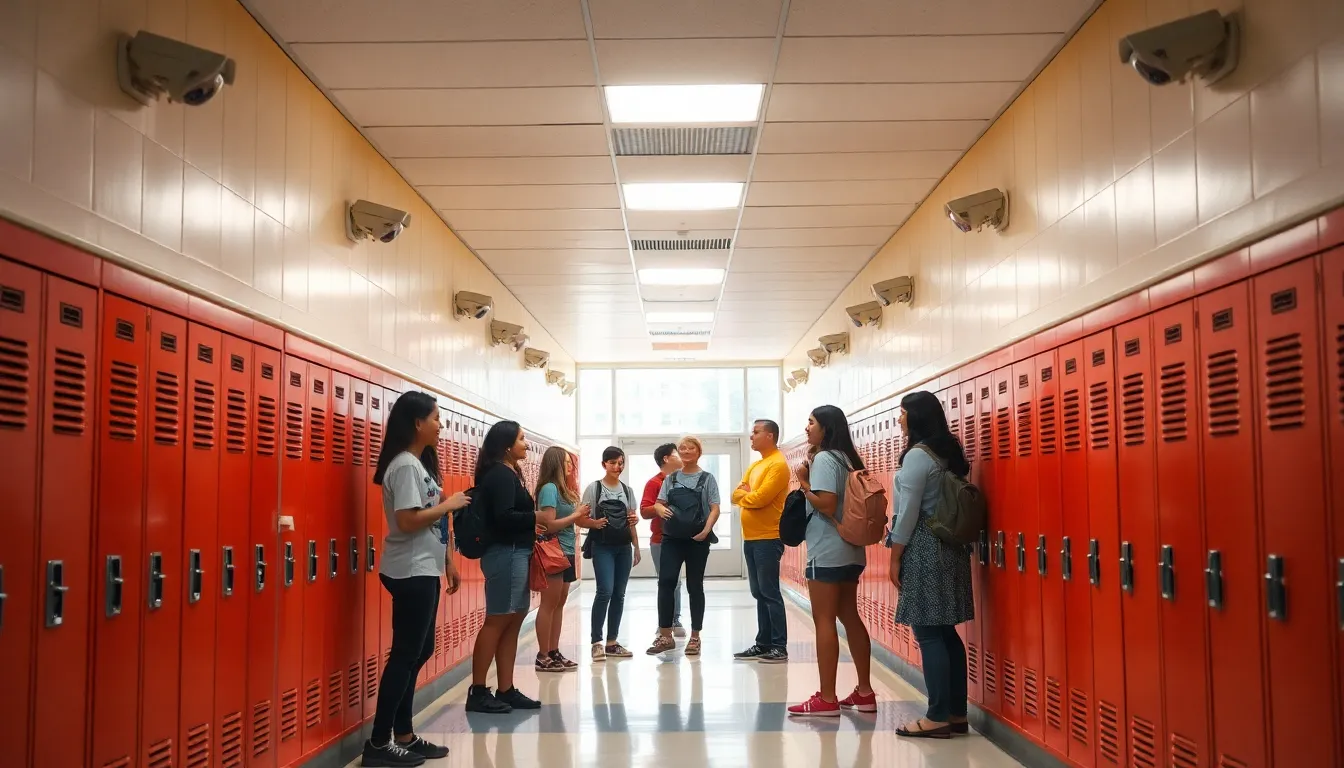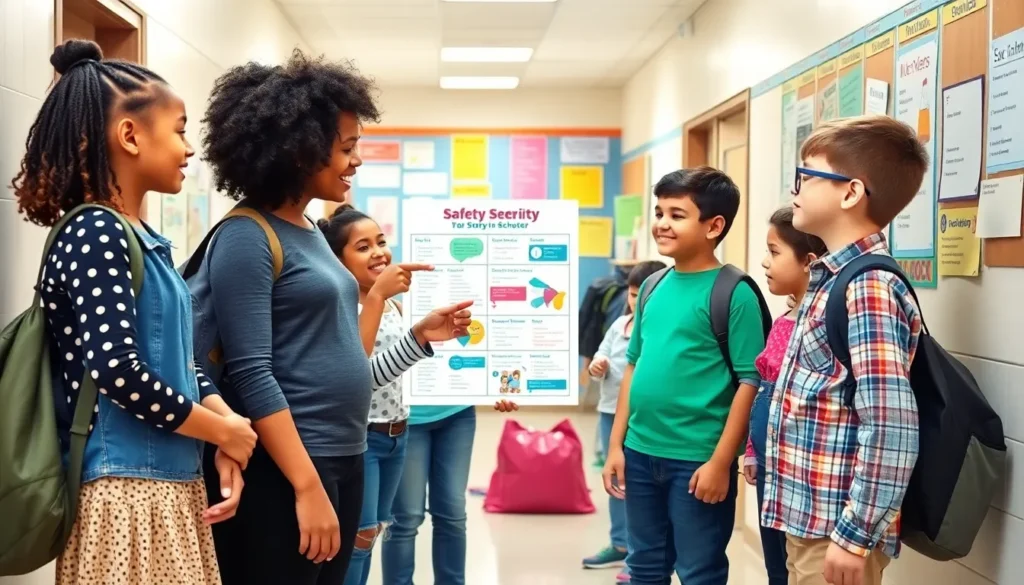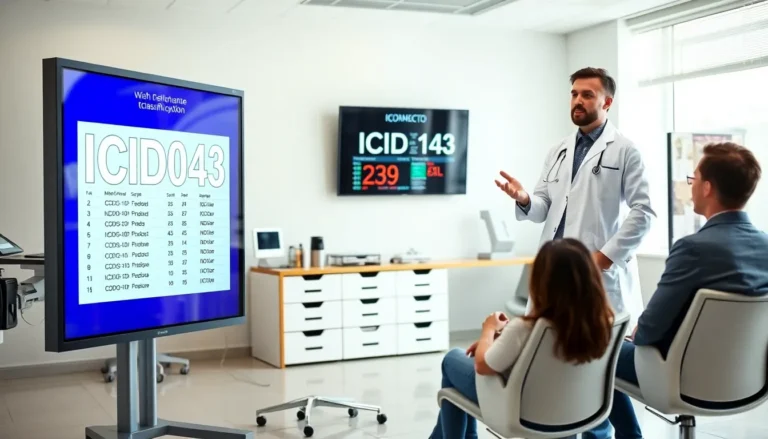Table of Contents
ToggleIn a world where dodgeball can feel like a contact sport and cafeteria food poses its own kind of danger, school safety has never been more crucial. It’s not just about preventing the occasional paper cut; it’s about creating an environment where students can thrive without worrying about what lurks around the corner. With the right strategies in place, schools can transform into fortresses of learning, where the only thing students need to dodge is homework.
As parents, educators, and community members, it’s time to put our heads together and tackle the pressing issue of school safety. From implementing comprehensive safety plans to fostering a culture of awareness, every little effort counts. After all, a safe school is a happy school, and who wouldn’t want a place where kids can focus on learning instead of dodging imaginary monsters? Let’s dive into the essential steps that can make our schools safer for everyone involved.
Understanding School Safety
School safety encompasses measures and protocols designed to protect students, staff, and property. It involves creating environments where individuals feel secure and can learn without interruptions caused by threats or hazards.
Definition of School Safety
School safety refers to the policies and practices that ensure a secure learning environment for students and staff. It involves physical security measures such as surveillance cameras and controlled access points. It also includes psychological safety through anti-bullying programs and mental health resources. A comprehensive definition incorporates both preventive strategies and responsive actions to address incidents effectively.
Importance of School Safety
School safety plays a crucial role in a successful academic experience. Secure environments allow students to focus on education without distraction or fear. Studies show that schools with robust safety measures experience improved student mental health and academic performance. Collaboration among parents, educators, and community members enhances these safety initiatives. Effective safety protocols build trust and foster a positive school climate, encouraging participation and engagement from all stakeholders.
Key Components of School Safety

School safety encompasses various strategies to ensure students can learn in a secure environment. Focusing on both physical and psychological aspects, schools can enhance safety significantly.
Physical Security Measures
Physical security measures are vital for safeguarding students and staff. Surveillance cameras monitor activities throughout school premises. Controlled access points restrict unauthorized entries, ensuring only approved individuals enter. Security personnel present on-site can respond quickly to incidents, enhancing overall safety. Proper lighting in parking areas and hallways deters potential threats. Emergency communication systems also alert everyone during critical situations, facilitating swift action.
Psychological Safety
Psychological safety plays an equally important role in fostering a secure school atmosphere. Anti-bullying programs create a positive environment by addressing harmful behaviors proactively. Mental health resources should be accessible to all students, promoting emotional well-being. Establishing supportive relationships with educators allows students to feel comfortable sharing their concerns. Encouraging open communication contributes to a culture where everyone feels valued and safe. Regular workshops on conflict resolution teach students essential skills for handling disputes constructively.
Emergency Preparedness
Emergency preparedness plans are crucial for effective response during crises. Regular drills, such as fire and lockdown exercises, ensure everyone knows their role. Staff training on emergency procedures equips educators with the skills necessary to handle various situations. Collaborating with local law enforcement enhances readiness by introducing real-world insights into safety measures. Access to first aid kits throughout the school enables immediate medical responses during emergencies. Regularly updating these plans keeps everyone informed and ready to act decisively when an incident occurs.
Current Trends in School Safety
School safety continues to evolve, driven by advancements in technology and changes in legislation. These trends shape how educational institutions protect students and staff from harm.
Technology in School Safety
Technology plays a crucial role in enhancing school safety protocols. Surveillance systems now include high-definition cameras and artificial intelligence for monitoring activities. Access control systems utilize key cards or biometric scanners to restrict entry, ensuring only authorized personnel can enter school buildings. Communication tools, such as emergency notification apps, allow instant alerts during crises, improving response times and coordination. Additionally, mental health apps connect students with resources, promoting a culture of wellness. Schools are increasingly integrating these technologies to create safer environments for all.
Legislative Changes
Legislation surrounding school safety is adapting to address current needs. Recent laws emphasize mental health resources and funding for safety measures in educational settings. States are introducing regulations mandating safety drills, ensuring students and staff are prepared for emergencies. Some initiatives expand background checks for school personnel, enhancing student safety. Furthermore, federal resources support the implementation of violence prevention programs, promoting a proactive approach to school safety. These legislative efforts reflect a growing recognition of the importance of safe learning environments.
Community Involvement in School Safety
Community involvement plays a vital role in enhancing school safety. By working together, parents, guardians, and community members create a supportive environment that prioritizes the well-being of students.
Role of Parents and Guardians
Parents and guardians significantly influence school safety. They actively participate in safety initiatives, such as organizing meetings to discuss concerns. Engagement in school safety plans leads to increased awareness and better communication between families and educators. Setting an example through vigilance promotes a culture of safety at home and in schools. When parents volunteer for safety programs, they strengthen the school’s safety protocols and foster a collaborative atmosphere.
Collaboration with Law Enforcement
Collaboration with law enforcement agencies proves essential for effective school safety. Local police departments often provide resources and training for emergency preparedness. Their involvement in safety drills enhances response times during potential incidents. Regular communication between schools and law enforcement fosters trust and shared knowledge. Inviting officers to community meetings improves transparency and encourages students to build positive relationships with law enforcement. This partnership equips schools to handle emergencies proactively, protecting students and staff more effectively.
Prioritizing school safety is essential for nurturing a productive learning environment. By fostering collaboration among parents educators and community members schools can implement effective safety measures that protect students both physically and emotionally.
The integration of technology and legislative support further enhances these efforts ensuring that safety protocols remain current and effective. With a proactive approach and community involvement schools can transform into secure spaces where students feel safe and supported.
Ultimately a commitment to school safety not only protects students but also empowers them to reach their full potential in their academic journeys.







